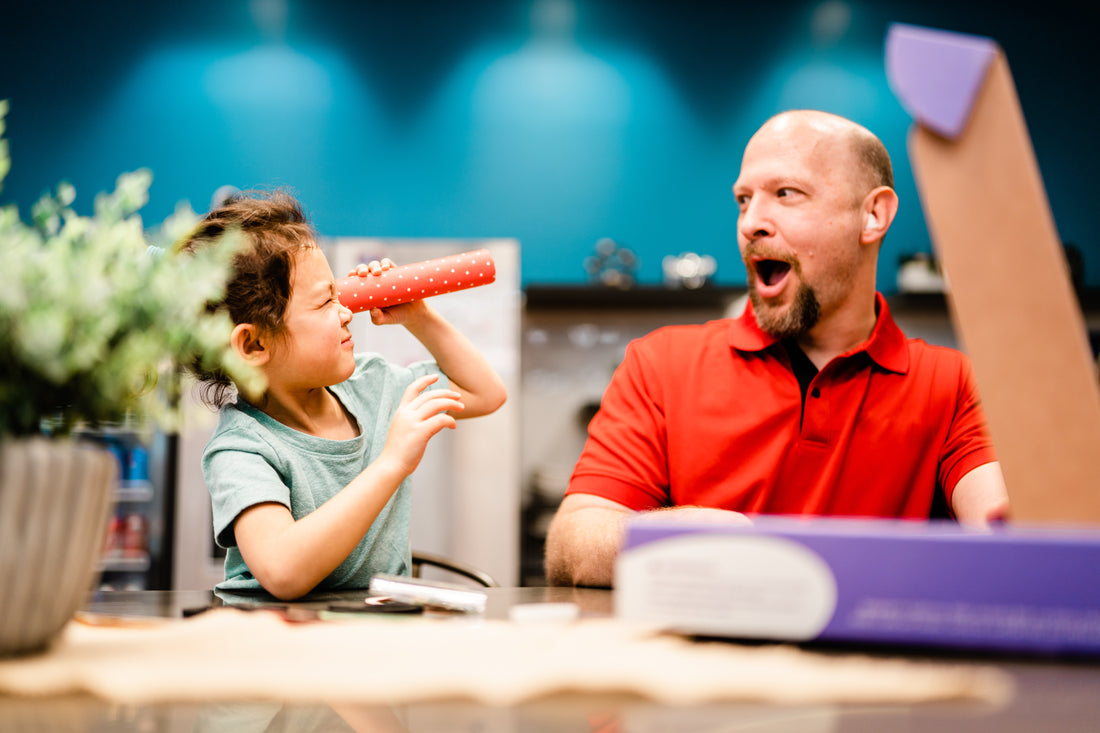
5 Ways to Boost Self-Esteem In Your Child
Diana Phuong
5 Ways to Boost Self-Esteem
Take a moment and ask your kid to describe him or herself in three sentences. Now, ask yourself the same question. Chances are you and your kid use very different ways to portray what kind of person you are! Psychologists call this description self-concept, a list of words about the roles, attributes, values, and attitudes that defines who we are. Based on that, when your child feels good about his or her self-concept, psychologists would say that your child has high self-esteem. That said, psychologists noticed that at about 5 -7 years old, children’s self-esteem might temporarily drop when they enter school because they start to compare themselves to other kids.
We asked the MEandMine emotion team, a team of experts made up of scholars, psychologists, and educators to offer five tips on how parents can help kids aged 5-7, boost their self-esteem during the transitions.
Pro Tip #1: Build on your child's strengths and be specific with your praise. Instead of saying “Good job!’ try saying, “Maria, you are very responsible. You came into the room, unpacked, and started your work immediately.” This highlights a child’s innate passion, joy, and curiosity. Children’s past successes and positive experiences bring about more confidence.
Pro Tip #2: Be supportive and loving but also firm and consistent when setting boundaries and expectations. Parent's stable and warm presence communicates to the kids that no matter what happens, you are there for them. Consistent boundaries also help to guide children during uncertain times, such as transitions. Consistency further provides children with a sense of stability.
Pro Tip #3: Identify the complexity of emotions your child might be feeling. This list may include guilt, embarrassment, pride, and envy. Give kids more words to use besides “happy,” “mad,” or “sad” to describe their emotions to help them and others better understand what they are feeling and how to support them. Help your kids figure out the incidence that makes them feel that way, and discuss how to deal with the emotions properly.
Pro Tip #4: Use role-play to go through situations when those emotions come up for your kiddo. Talk about how to do it differently if that situation were to arise again. This helps them feel prepared to handle situations effectively and resolve conflicts.
Pro Tip # 5: Create an environment at school and at home where learning from failure is normal. Use mistakes as a teaching opportunity to learn from them and improve. They will face new challenges because of new routines and experiences. A growth mindset is essential in building resilience and reducing frustration tolerance.
Parents, you may rush to forge a super positive self-concept and high self-esteem. You may want to be the superhero and never see your child feel down. However, research has shown that sheltering a student far away from all negative experiences and criticism may not work. Rather, learning from all experiences, good or bad, provides the best environment to build a positive self-concept and self-esteem.
The process of building a strong and positive self-concept and self-esteem is like hurdling: The more obstacles the child successfully jumps over, the more positive self-concept and self-esteem the child develops. What parents are suggested to do is accompany the child during the entire journey, encourage them to learn from past successes and failures and move on, and celebrate the achievements even tiny ones. Next time, see how your child changes the way he or she describes him or herself. You may be surprised!





 Most Popular
Most Popular
